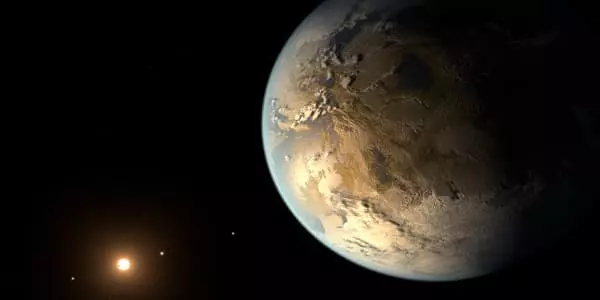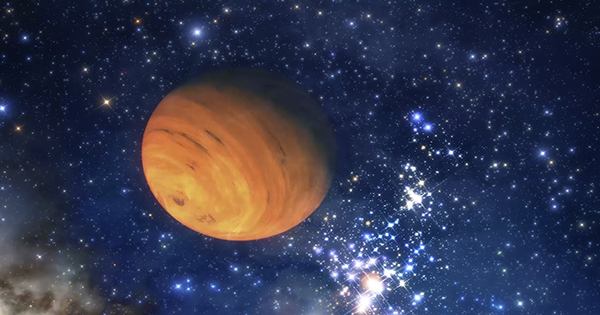Kepler-438b has been confirmed as a near-Earth exoplanet. It is the first near-Earth-size world discovered in a star’s habitable zone similar to our sun. It’s probably rocky. It orbits near the inner edge of the habitable zone of a red dwarf, Kepler-438, in the constellation Lyra, about 472.9 light-years (141,8 parsecs) from Earth. It is the first planet to orbit a star of similar size and temperature to the sun. It receives 1.4 times as much solar flux as we do. The planet was discovered by NASA’s Kepler spacecraft using the transit method, which measures the dimming effect caused by a planet as it passes in front of its star. On January 6, 2015, NASA announced the confirmation of the exoplanet.
Kepler-438b is slightly larger than Earth and orbits an orange dwarf star that provides it with 40% more heat than the sun does. Kepler 438b’s small size suggests that it is a rocky world, while its proximity to its star places it in the “Goldilocks” or habitable zone, where the temperature is just right for liquid water to flow. A rocky surface and flowing water are two of the most important factors scientists consider when determining a planet’s suitability for life.

Characteristics
Mass, radius, and temperature
Kepler-438b is an Earth-sized planet, an exoplanet with a mass and radius similar to Earth’s. It has a radius of 1.12 R☉ and a mass that is unknown. Its equilibrium temperature is 276 K (3 °C; 37 °F), which is close to that of Earth.
Kepler 438b is 470 light-years away and orbits its star every 35 days, making a year on the planet 10 times faster than on Earth. Small planets are more likely to be rocky than large ones, and at only 12% the size of Earth, the chances of Kepler 438b being rocky are roughly 70%.
Host star
The planet Kepler-438 orbits an M-type red dwarf star. The star has a mass of 0.54 M and a radius of 0.52 R☉, both of which are nearly half that of the Sun. It has a surface temperature of 3748 K and is estimated to be 4.4 billion years old, which makes it only 200 million years younger than the Sun, which has a surface temperature of 5778 K. The apparent magnitude of the star, or how bright it appears to us from Earth, is 14.467. As a result, it is too dim to see with the naked eye.
Orbit and possible moons
Every 35 days and 5 hours, Kepler-438b orbits its parent star. Because of its close proximity to its star, it is most likely tidally locked. The Hunt for Exomoons with Kepler project’s search for exomoons near Kepler-438b found that a hypothetical moon’s maximum mass was 29 percent that of the planet.
Habitability
The planet was announced to be orbiting within Kepler-438’s habitable zone, a region where liquid water could exist on the planet’s surface. It has been discovered, however, that this planet is subjected to powerful radiation activity from its parent star every 100 days, which is much more violent than the stellar flares emitted by the Sun and is capable of sterilizing life on Earth.
Scientists are unsure whether Kepler-452b can support life. What is known about the planet is that it is roughly 60% larger than Earth, putting it in a class of planets known as “super-Earths,” with a 385-day orbit. Kepler-452b is thought to be about 6 billion years old, making it much older than Earth.
According to researchers at the University of Warwick, Kepler-438b is uninhabitable due to the high level of radiation it receives. The question of what makes a planet habitable is much more complicated than simply being close enough to its host star for water to be liquid on its surface: various geophysical and geodynamical aspects, radiation, and the host star’s plasma environment can all influence the evolution of planets and life if it exists. It is more likely that the planet will resemble a larger and cooler version of Venus.
















